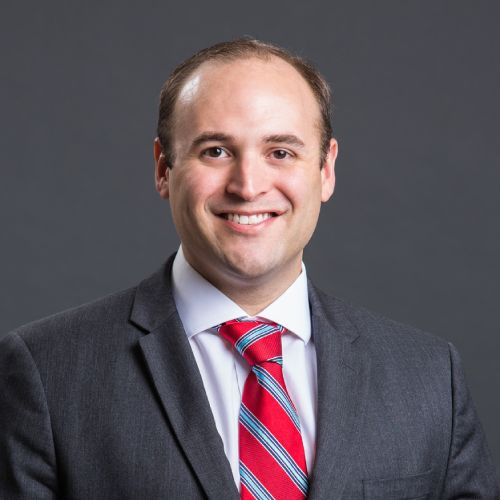Bringing a child into this world should be one of the happiest moments of your life. However, a negligent medical professional can turn a birthing experience into a nightmare. If your child was diagnosed with cerebral palsy and you believe their condition resulted from medical mistakes before, during, or after birth, contact an attorney today. Cerebral palsy requires lifelong treatment and therapy. All parents want to give their children the best possible chance at life. Read on to learn more about cerebral palsy and how compensation in a medical malpractice lawsuit can make a meaningful difference in a child’s quality of life.
Cerebral Palsy Causes
Cerebral Palsy is the name given to a group of permanent, non-progressive brain disorders caused by either the abnormal development of the brain or damage to the developing brain. The damage to the brain impacts and controls movement, so most individuals with cerebral palsy have difficulty controlling their muscles. The events causing cerebral palsy typically occur during, before, or shortly after birth or in the first few years of life when the brain is still developing.
A doctor or medical professional’s malpractice may also cause cerebral palsy and birth injuries in certain cases. Examples of malpractice that have led to a cerebral palsy diagnosis include the following:
- Failing to diagnose or treat an infection or complication,
- Failing to exercise care when using medical equipment during a birth, including a vacuum,
- Delaying or failing to perform a C-section, and
- Restricting oxygen to the baby during birth.
A skilled medical malpractice attorney carefully analyzes all medical documents to determine the cause of your child’s cerebral palsy diagnosis and whether you have a case to recover damages for the harm you and your family suffered.
Cerebral Palsy Symptoms
Cerebral palsy symptoms vary from person to person. However, the most common issues concern a person’s movement, coordination, and development. Examples of cerebral palsy in a child include the following:
- Failing to reach developmental milestones,
- Body and limbs that are either too stiff or too floppy,
- Weak arms or legs,
- Clumsy or jerky movements of limbs and body,
- Uncontrolled movements,
- Shaking hands,
- Walking on tiptoes, and
- Muscle spasms.
While cerebral palsy commonly affects the whole body, in some instances only certain parts of a person’s body may be affected.
Other examples of symptoms of cerebral palsy include the following:
- Feeding and swallowing problems,
- Drooling,
- Problems speaking and communicating,
- Seizures,
- Scoliosis,
- Hips that dislocate easily,
- Difficulty controlling the bladder,
- Learning disabilities,
- Eye problems, and
- Hearing loss.
Maintaining an accurate diagnosis of cerebral palsy is vital to pursuing a claim for medical malpractice against the doctor or medical professional that caused your child harm.
Cerebral Palsy Legal Options for Compensation
If you believe your child’s cerebral palsy diagnosis resulted from negligence during birth, your attorney may advise you to pursue a medical malpractice lawsuit. These lawsuits are highly complex and require the help of an experienced lawyer. Cerebral palsy cases provide families with compensation for a victim’s losses through two types of recoverable losses.
Economic damages are calculable and stem direction from the injury. In cerebral palsy cases, these typically include current and future medical expenses. Medical expenses include costs for the following:
- Wheelchairs,
- Walkers,
- Physical therapy,
- Speech therapy, and
- Corrective surgery.
Documentation helps your attorney calculate the value of these losses and support your demand so you and your family receive the compensation you deserve.
Noneconomic damages represent subjective losses usually resulting from the emotional and psychological losses associated with a cerebral palsy diagnosis. These losses include:
- Pain and suffering,
- Loss of quality of life, and
- Emotional distress.
Though difficult to prove, noneconomic damages provide the much-needed assistance for the emotional toll a cerebral palsy injury places on a family.
Is There a Statute of Limitations on Cerebral Palsy Birth Injuries?
The statute of limitations for any case is the period defined by law when a person must file a lawsuit. Failing to file within this period bars them from pursuing a lawsuit at any later time. Florida law defines the statute of limitations for medical malpractice lawsuits as two years from when the malpractice occurred or the discovery of the malpractice. While some exceptions to these filing periods exist, they should not be relied upon. Don’t let your time run out, and speak to an attorney promptly to explore your options for compensation.
Contact Us
When you retain the team at James Horne Law, PA, to represent you, you quickly learn about their steadfast commitment to their clients in personal injury matters. We never view clients as file numbers. Our legal team takes the time to understand the intricacies of your case and the severe nature of your legal situation. No case is too complex, and we fight to achieve the best possible result in every case possible. At James Horne Law PA, we take on every challenge and thrive in environments where the stakes are high. We are 100% transparent with our clients and let you know if we don’t think you have a case. With our stellar reputation, you can trust us in litigating challenging cases for the best results. Contact us today by phone or email to learn how James Horne Law PA can help you!



